After the crowds leave: when you’re alone in the Alps
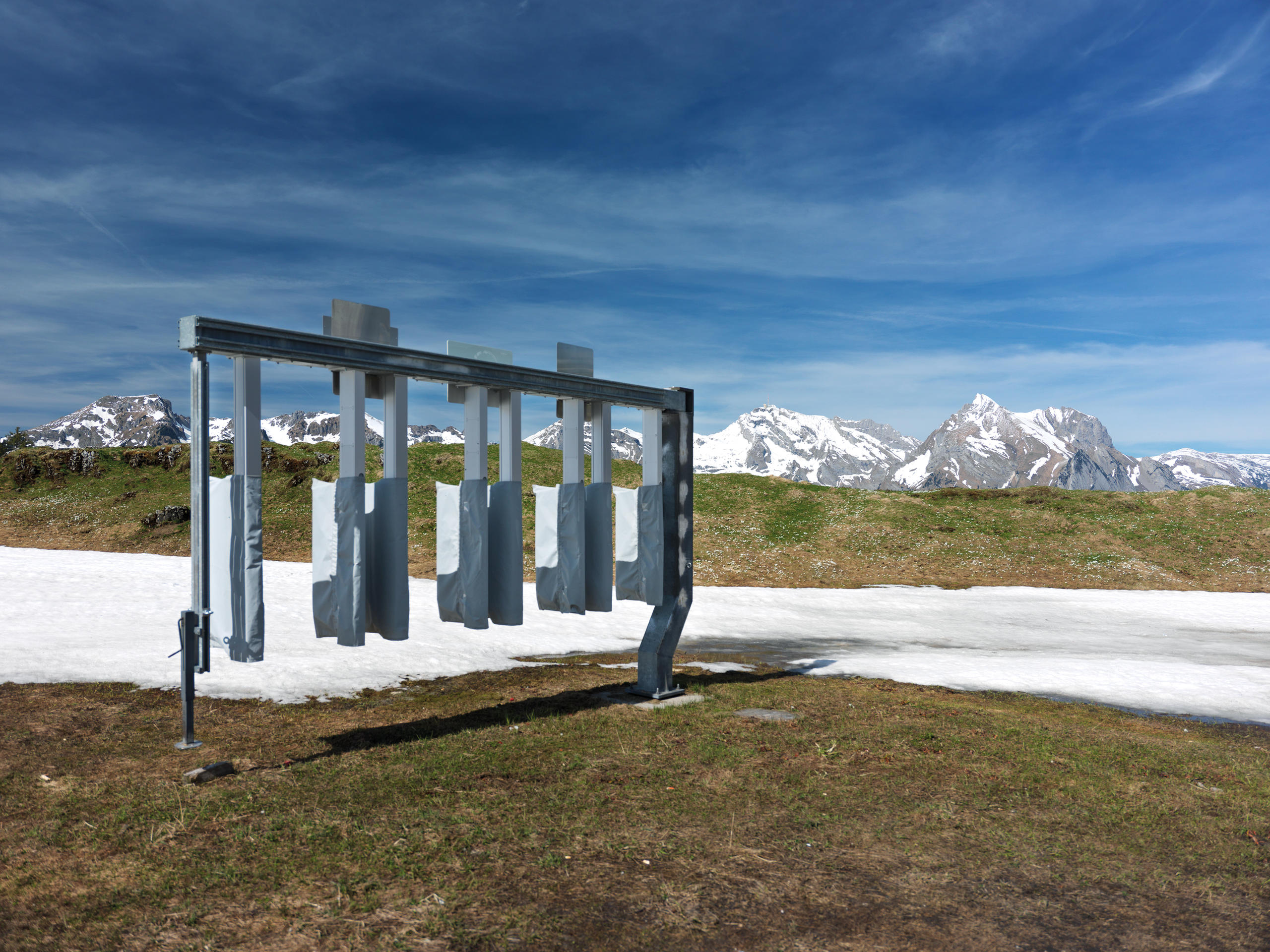
What’s it like to be in the mountains when the last skiers have gone home and summer hikers have yet to arrive?
That’s the question the Swiss photographer, Simon Walther, sought to answer in the mountain landscapes he captured during his extensive travels in the Alps. What he found was a sense of bleak desertion and, somewhat blissfully, silence.
In springtime, for three successive years, Walther visited ski resorts which by Easter are typically abandoned by the last of the millions of holidaymakers who flock each winter to the Alps.
By the time the photographer arrived on the scene, the snow was disappearing. Often the last snow to melt is that covering the ski slopes, groomed and compacted by snowcats, also known as piste bashers.
Walther shared some of his work with us. These photos also appear in his German-language book ZwischenSaison External link(“between seasons”).
This image shows what that looks like at the Gemsstock ski area above the village and resort of AndermattExternal link.
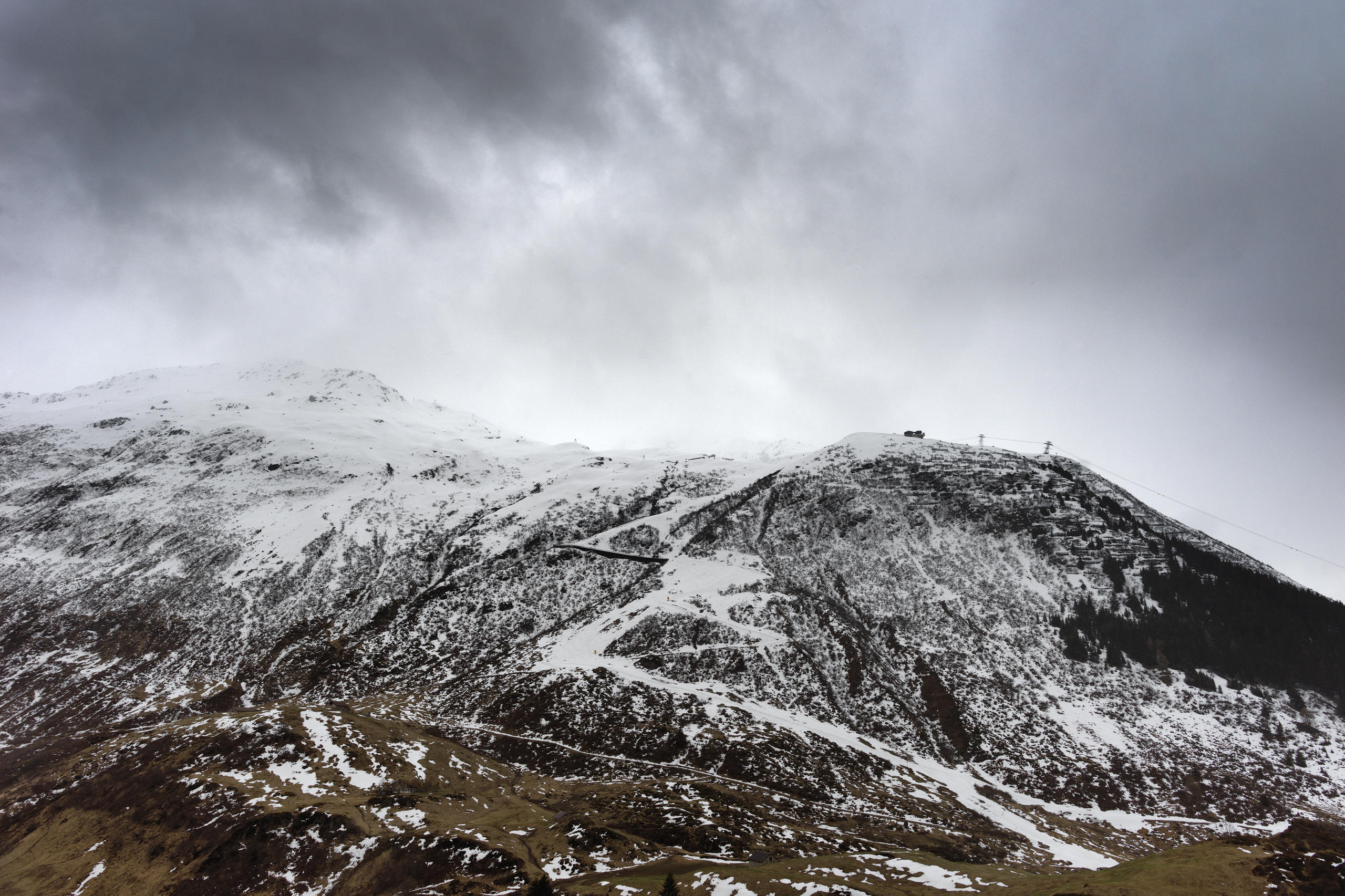
A large ski resort spends on average more than CHF200,000 a day to operate its lifts, prepare its slopes and make snow, according to the Swiss associationExternal link of cable car and ski lift operators. The costly machinery, hooked up to water hoses, is fed from reservoirs built for the sole purpose of snowmaking.
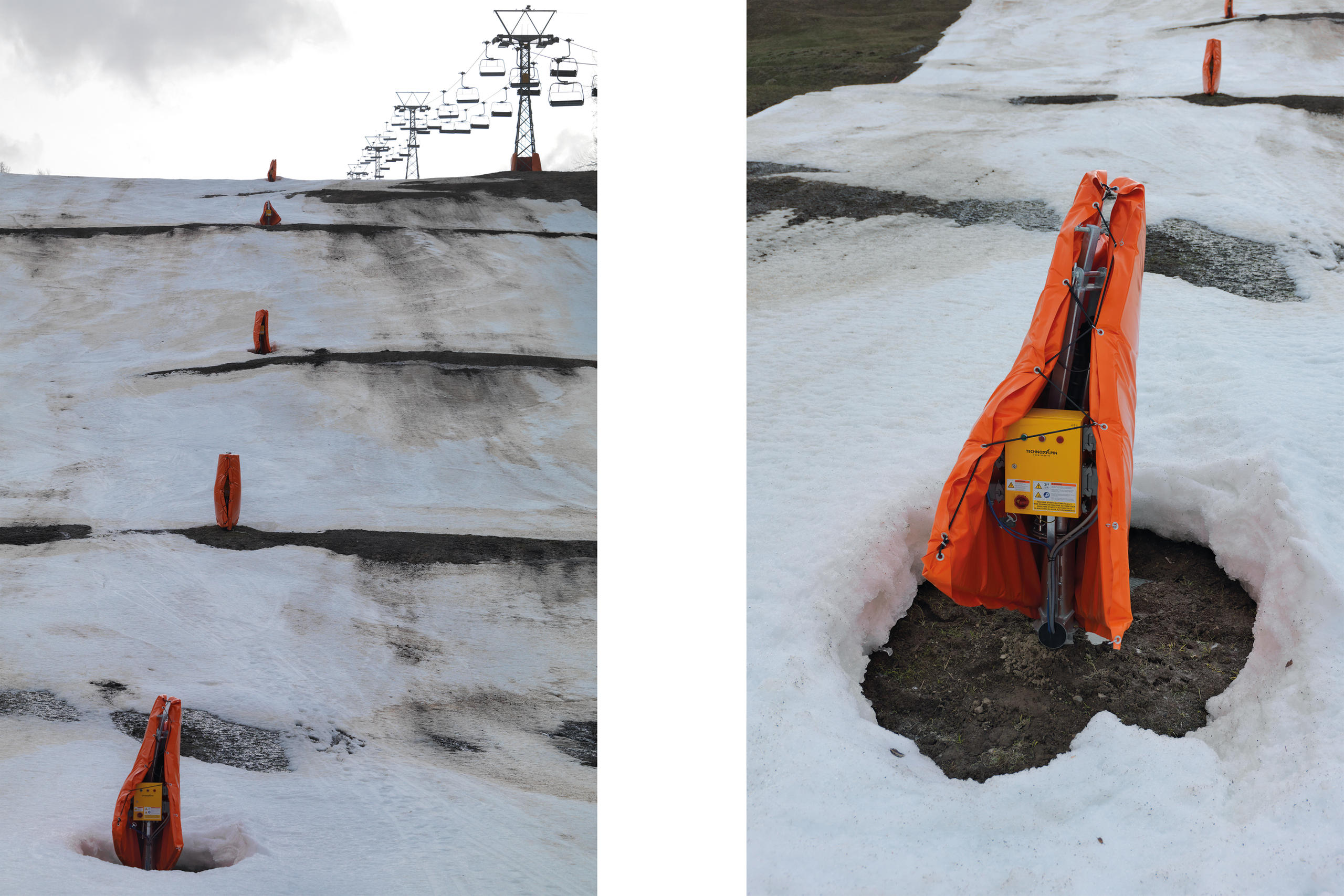
The ski slopes of Zermatt External linkare also equipped with snowmaking installations, like the long lance below. Snowmaking accounts for about a quarter of a resort’s operational costs, and it’s long been considered indispensable to attract skiers expecting perfect skiing conditions.
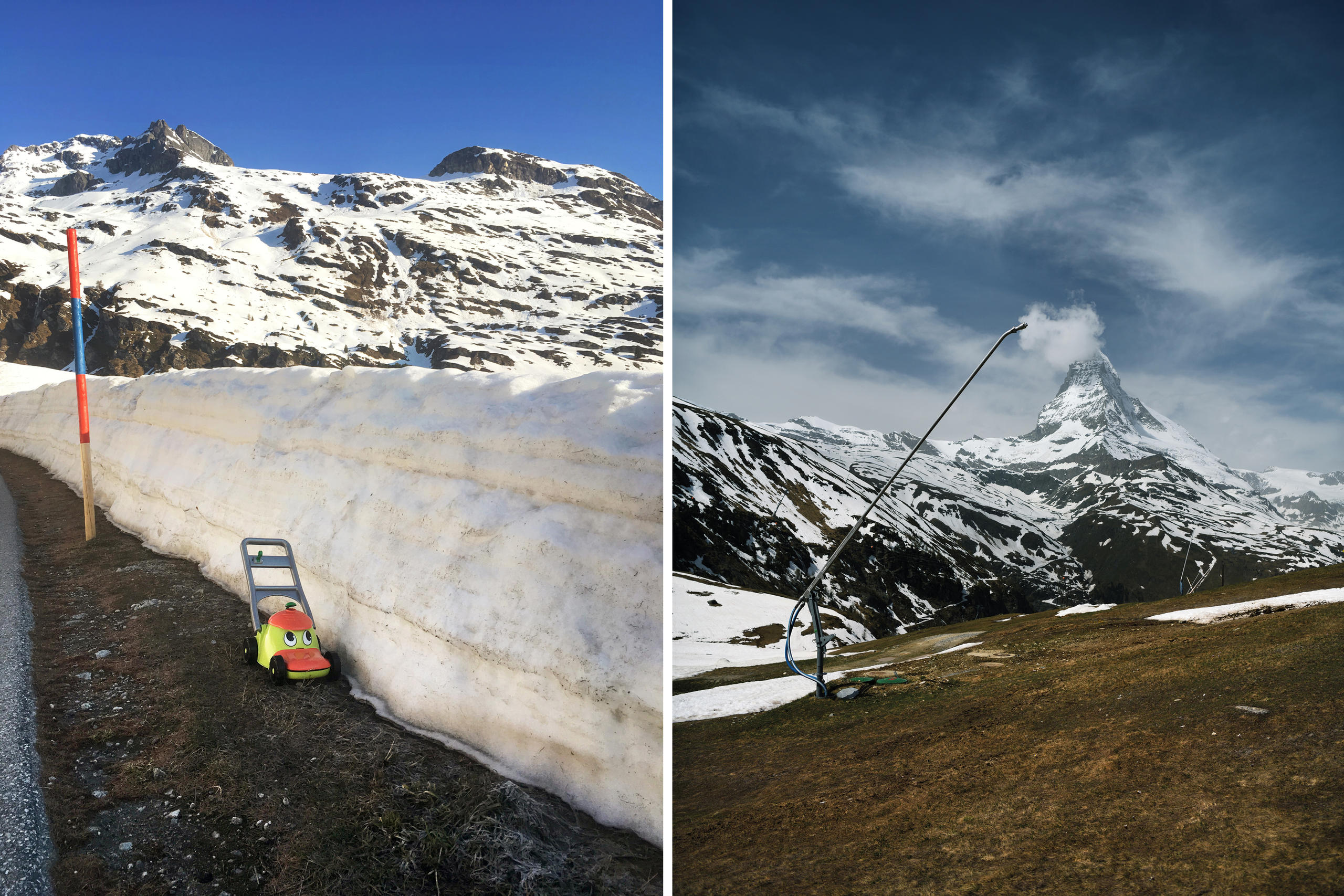
As winters become shorter, making snow has become crucial to keep resorts open until Easter, the traditional end of the ski season. But once the long holiday weekend is over, the power for the ski infrastructure, from chairlifts to snow cannons, is turned off, and the thousands upon thousands of employees who operate the ski lifts and maintain the runs, wait the tables and check in guests, abandon the slopes, hotels, restaurants and mountain roads.
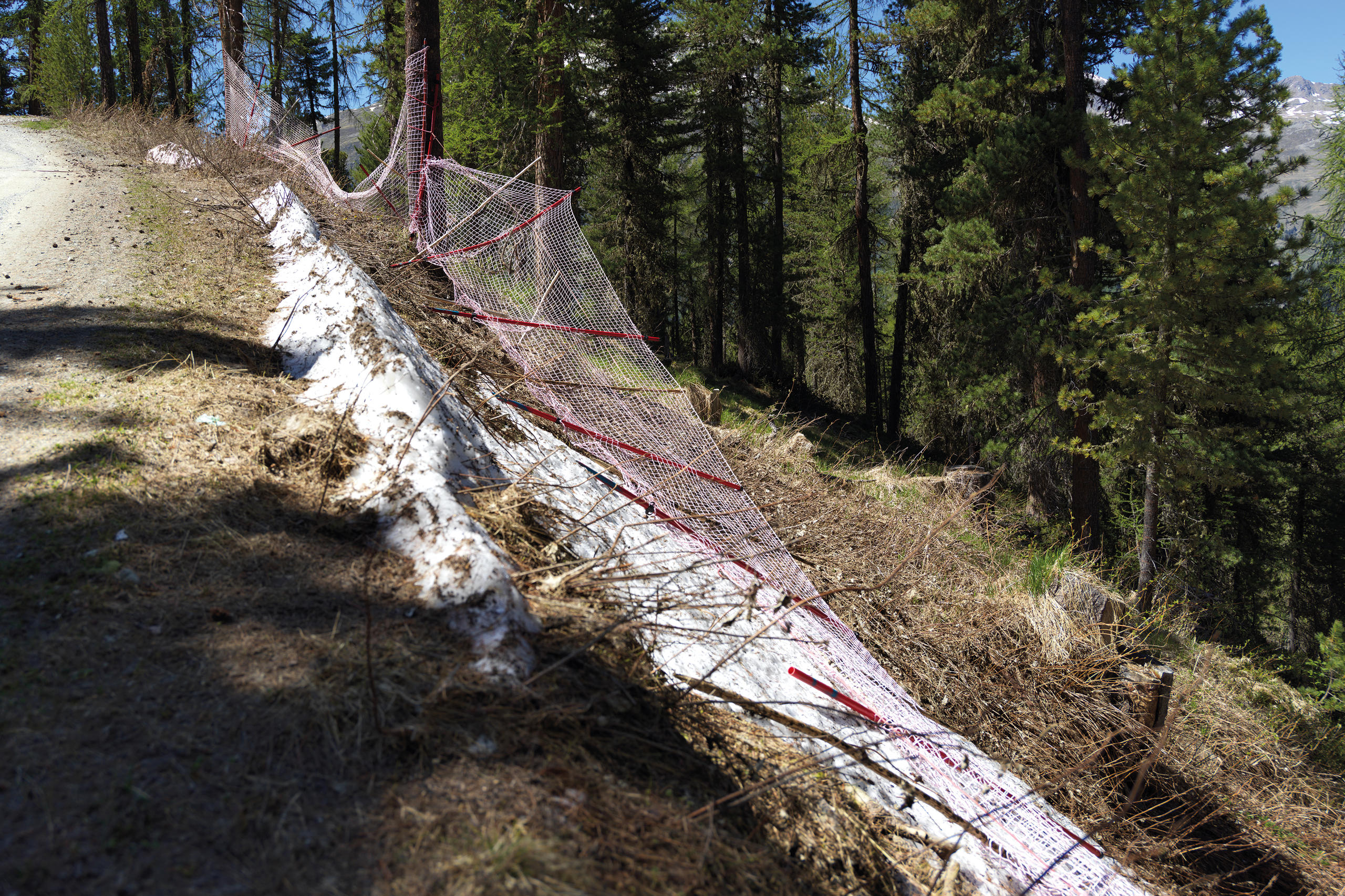
In the image below on the left, Walther took his camera into the curve of St Moritz’s Olympia bob run. It’s the last remaining natural ice trackExternal link of its kind in the world. The high altitude of St Moritz (1,800m or 5,900 ft) makes building it by hand possible, without refrigeration. However, a consequence is that the track cannot be kept open artificially. It closed this year on the first weekend of March.
In the image on the right, a stone painted to indicate a summer hiking trail pokes its head out of the snow near the Albula Pass, above St Moritz.
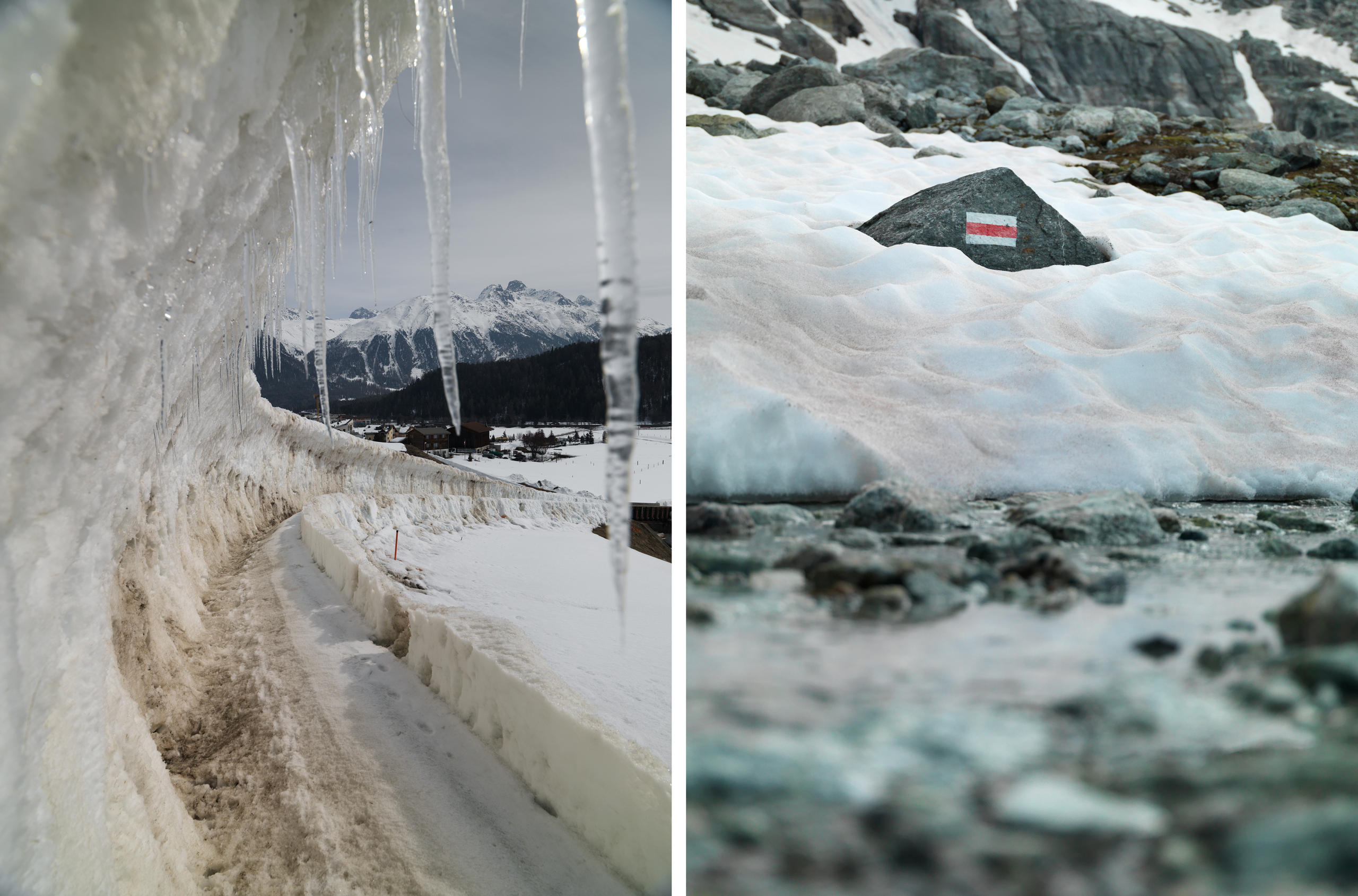
Camping is forbidden on the Albula Pass (left image) but it’ll still be a couple of months before the snow melts and anyone is tempted to spend the night under its starry skies. It’ll also be a while before any guests lounge in the gardens of hotels in the southern Maggia valley, despite the lower altitude.
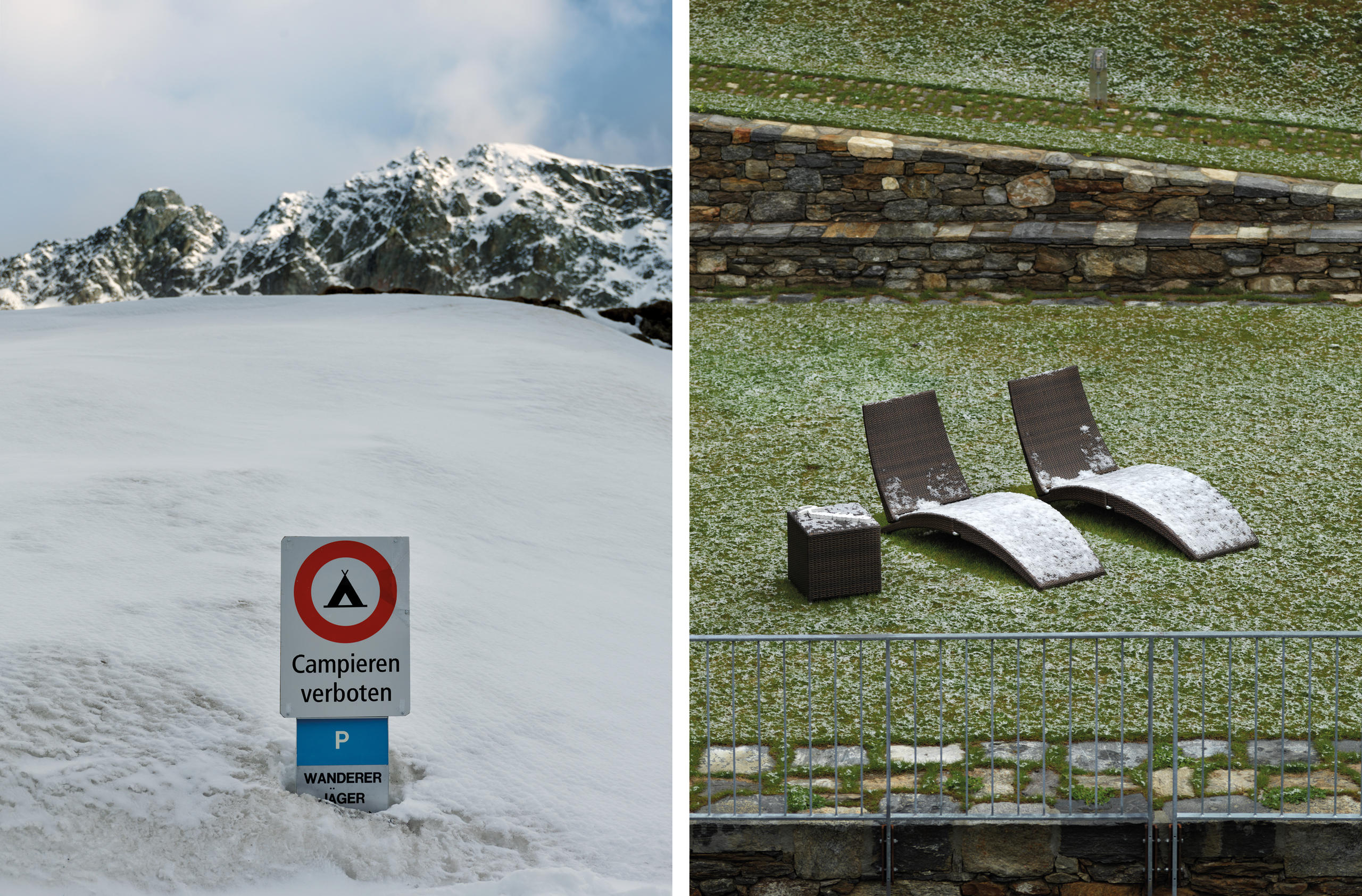
Across the Swiss Alps, the short winter season accounts for nearly three quarters of annual turnover in mountain resorts. So it’s no surprise to find hotels and restaurants shut and lifts deserted for most of the year in some areas.
+ Find out why Switzerland is no longer a nation of skiers
But that has been changing. Local business activities in summer – when walkers and mountain bikers replace skiers, and camping is popular – have grown over the past ten years from only 13% of turnover to 28%.
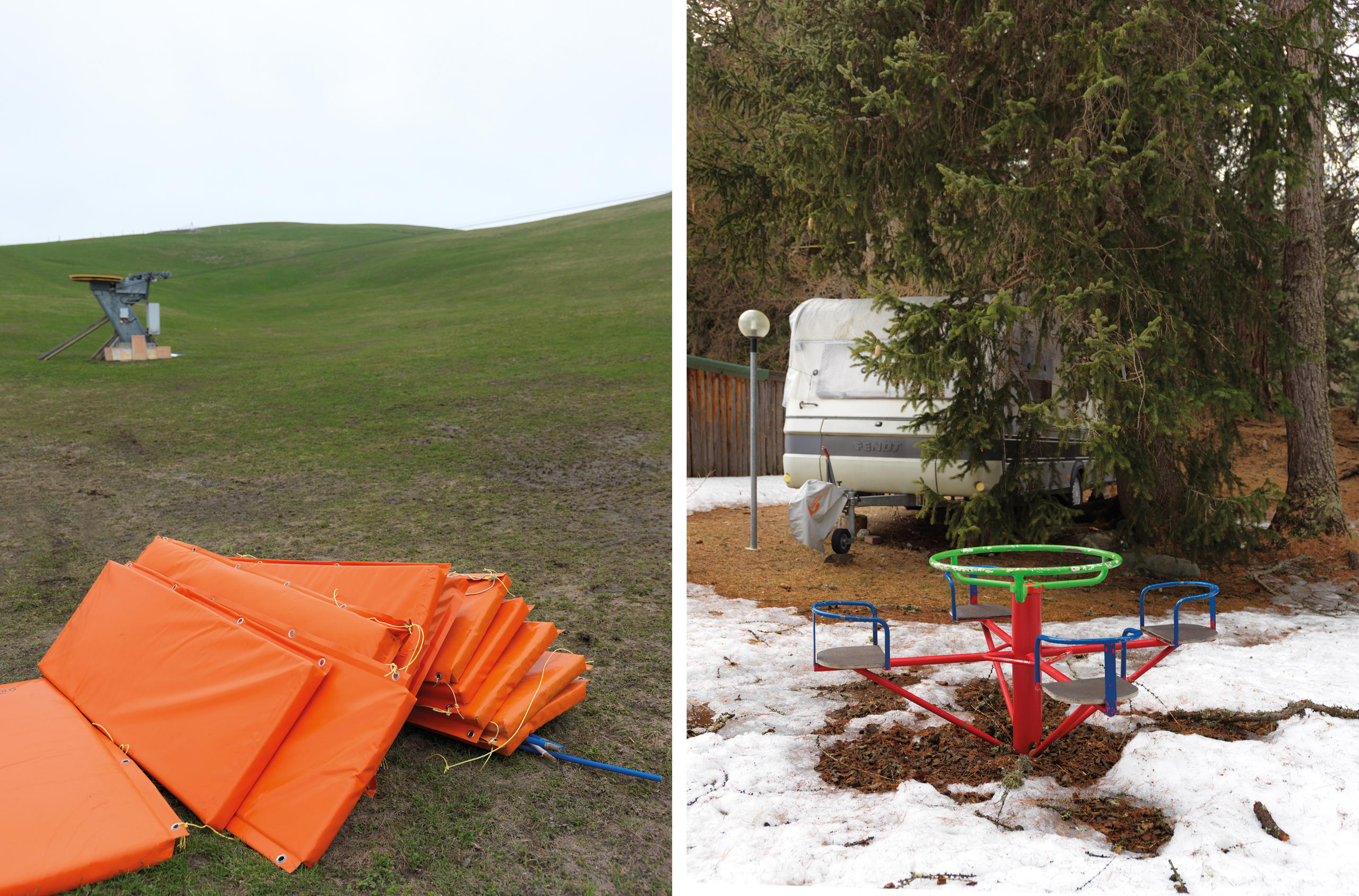
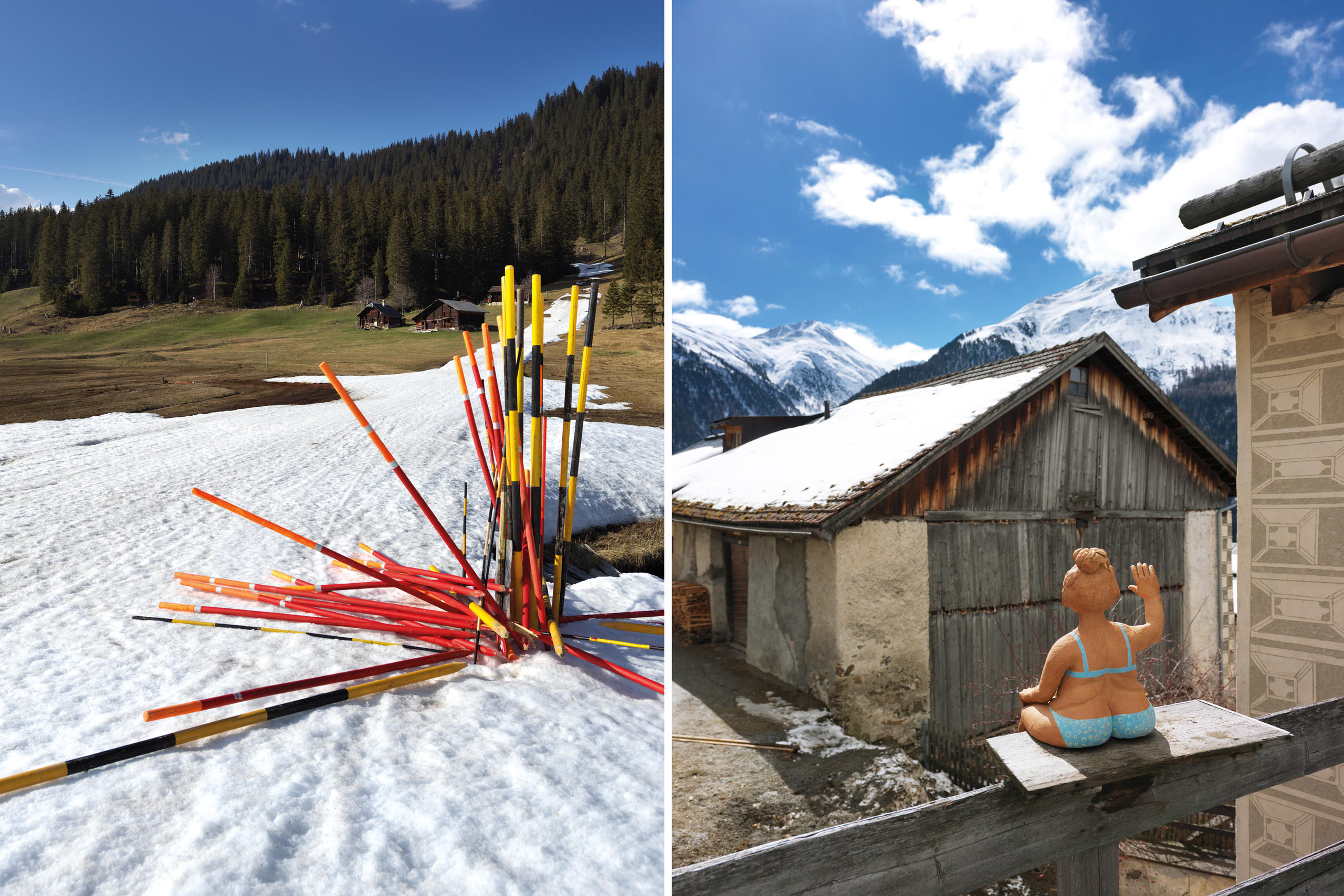
‘Between Seasons’ is Walther’s second photo book of alpine landscapes. His first was a collectionExternal link of mirror images, depicting mountains and their reflections in lakes.

In compliance with the JTI standards
More: SWI swissinfo.ch certified by the Journalism Trust Initiative














You can find an overview of ongoing debates with our journalists here . Please join us!
If you want to start a conversation about a topic raised in this article or want to report factual errors, email us at english@swissinfo.ch.